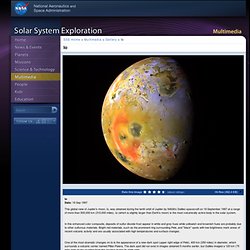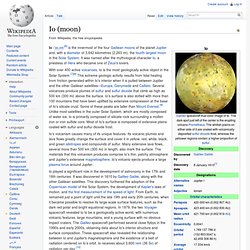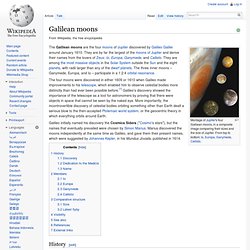

Io. Io Date: 19 Sep 1997 This global view of Jupiter's moon, Io, was obtained during the tenth orbit of Jupiter by NASA's Galileo spacecraft on 19 September 1997 at a range of more than 500,000 km (310,000 miles).

Io (which is slightly larger than Earth's moon) is the most volcanically active body in the solar system. In this enhanced color composite, deposits of sulfur dioxide frost appear in white and grey hues while yellowish and brownish hues are probably due to other sulfurous materials. Io. Io (moon) Io's volcanism causes many of its unique features.

Its volcanic plumes and lava flows greatly change the surface and cover it in yellow, red, white, black, and green allotropes and compounds of sulfur. Many extensive lava flows, several more than 500 km (300 mi) in length, also mark the surface. The materials that this volcanism produces comprise Io's thin, patchy atmosphere and Jupiter's extensive magnetosphere. Galilean moons.
The four moons were discovered in either 1609 or 1610 when Galileo made improvements to his telescope, which enabled him to observe celestial bodies more distinctly than had ever been possible before.[1] Galileo's discovery showed the importance of the telescope as a tool for astronomers by proving that there were objects in space that cannot be seen by the naked eye.

More importantly, the incontrovertible discovery of celestial bodies orbiting something other than Earth dealt a serious blow to the then-accepted Ptolemaic world system, or the geocentric theory in which everything orbits around Earth. Galileo initially named his discovery the Cosmica Sidera ("Cosimo's stars"), but the names that eventually prevailed were chosen by Simon Marius. Marius discovered the moons independently at the same time as Galileo, and gave them their present names, which were suggested by Johannes Kepler, in his Mundus Jovialis, published in 1614. History[edit] Discovery[edit]